Classic Brioche Bread with Video
Classic Brioche dough bakes up to a light and silky bread. It can also be the basis of many delicious pastries. Here’s how to make Brioche bread from scratch…
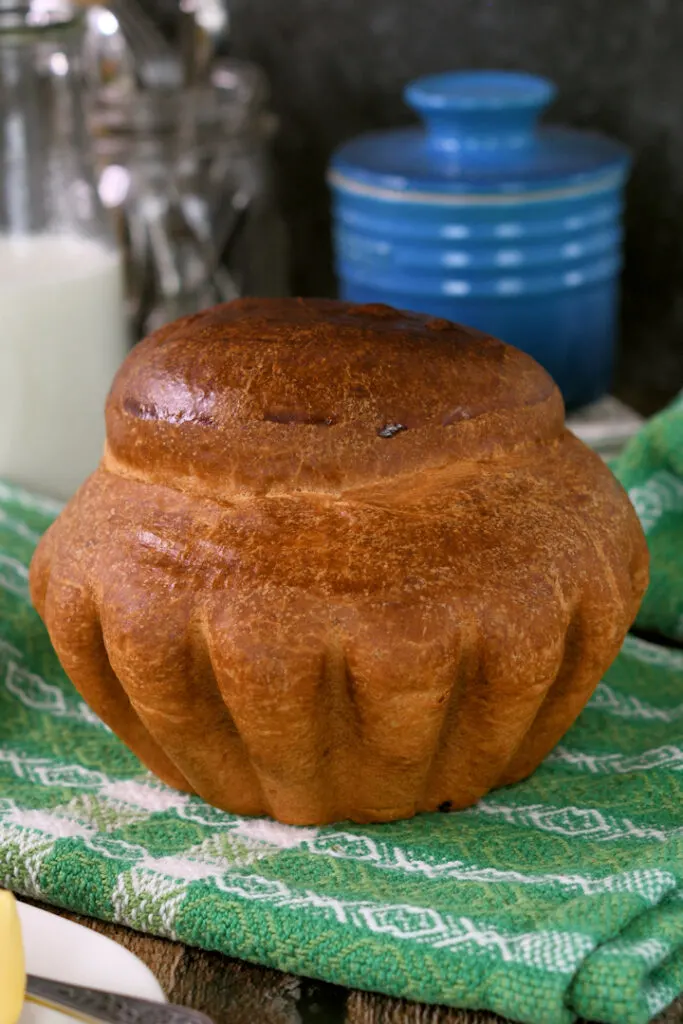
This buttery and beautiful enriched bread dough can be used to make a tasty loaf of bread, and so much more. You can create Chocolate Cherry Buns or Apricot Pistachio Buns with this dough.
Brioche burger buns are super popular right now. Visit my Hamburger Bun recipe to see how to shape hamburger buns.
If you maintain a sourdough starter, you can click over to this recipe for Sourdough Brioche.
Tips for making great Brioche Bread from scratch:
- Use LOTS of butter. Classically, the recipe has a ratio of about 2:1, flour to butter. This is a very rich dough.
- Use eggs and sugar to tenderize and lightly sweeten the bread.
- Knead the dough a long time to develop the gluten. This helps the super-rich bread hold it’s shape as it rises.
- The dough can be chilled either before of after shaping the loaves. If your dough is getting warm, chill after rising and before shaping the loaf. If the dough is fairly cool you can shape the bread right after the first rise.
- When you bake the dough in a loaf pan it is called a “Nanterre”. Brioche baked in a fluted pan is called a Tête (head) because of the top knot on the loaf.
FAQs about making Classic Brioche Bread:
Well, technically, since Brioche was made long before stand mixers were invented it is possible. But it’s not easy without a stand mixer. You have to fold and u0022slapu0022 the dough on the work surface for a good 20-30 minutes to develop gluten. Traditional kneading with your hands would warm up the dough too much.
I recommend using European butter because the lower water content means the butter is more pliable at cooler temperatures. This makes it easier to incorporate the butter into the dough. You can use American butter, just make sure it’s pliable, but not melting.
The long kneading process is imperative to a great loaf of Brioche bread. Because of the high butter content, you need well-developed gluten to help the bread rise and hold the air pockets.
Yes, after the first rise you can put the bowl of dough into the refrigerator then shape and rise the dough the next day. If the dough isn’t too warm to handle, you can also shape the dough after the first rise and place the pans into the refrigerator over night. Finish rising and bake the next morning.
Because of it’s enriched and slightly sweet crumb, Brioche dough can be the basis of many other tasty treats. Roll the dough, sprinkle with cinnamon sugar and raisins, then swirl into a loaf to make cinnamon raisin bread. Shape the dough into cinnamon buns or fill it with chocolate to make Babka.
2-3 days at room temperature.
Make French toast or bread pudding!!
Yes. Freeze either the whole loaf or slice and freeze for easy eating.
Watch the video to see how to make Classic Brioche Bread
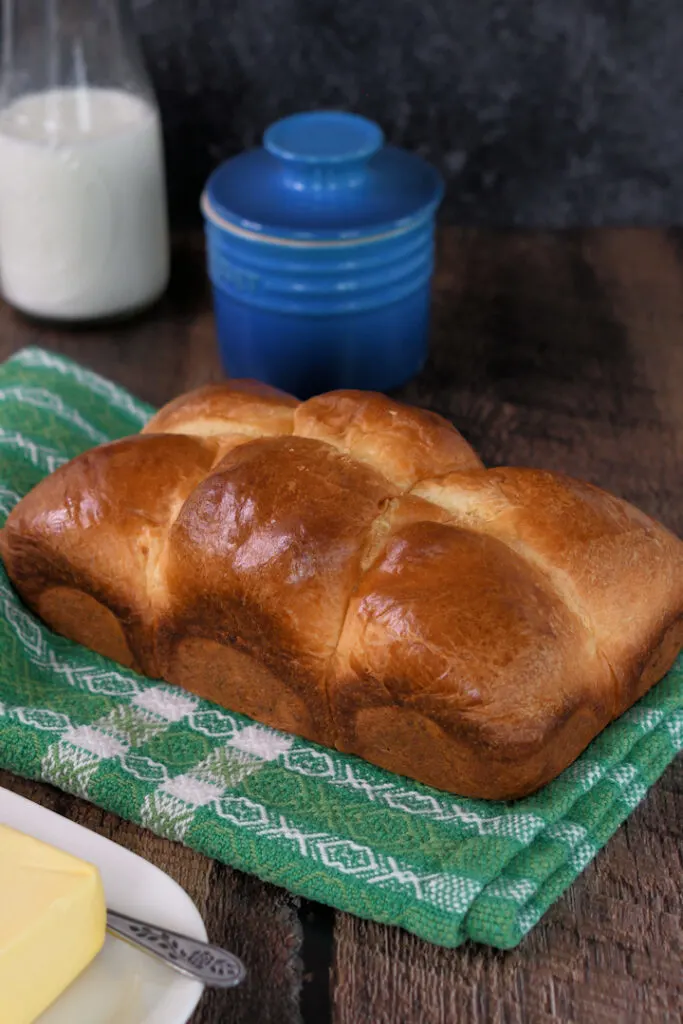
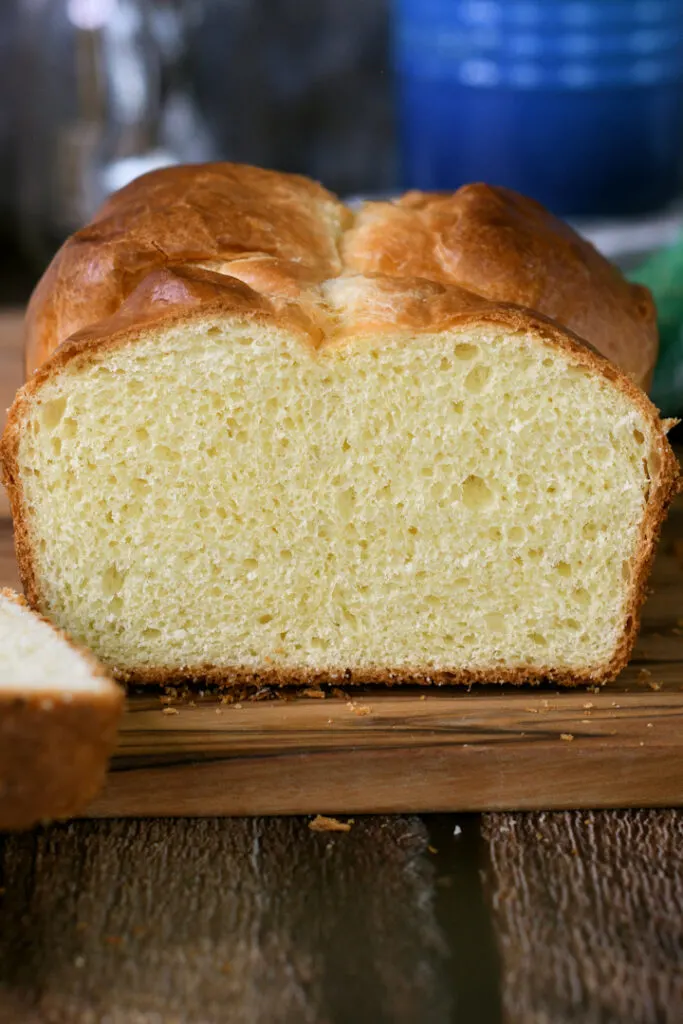
If you love this recipe as much as I do, I’d really appreciate a star rating and a quick comment. Ratings and comments help my recipes show in search results. Thanks!
Classic Brioche
Ingredients
- 6 oz whole milk (⅔ cup, scalded and cooled)
- 2 ¼ teaspoons dry yeast
- 17 ½ oz bread flour (3 ½ cups, see note)
- 4 large eggs (room temperature)
- 3 oz granulated sugar (⅓ cup)
- 1 ½ teaspoons salt
- 8 oz unsalted European butter (at cool room temperature)
- 1 egg (for egg wash)
Instructions
- In the bowl of a stand mixer with the paddle attachment, combine 6 oz whole milk, 2 ¼ teaspoons dry yeast and 1 cup (5 oz) flour. Mix to form a thick batter. Cover the bowl and set aside for 30 minutes.
- After 30 minutes uncover the bowl. With the mixer running, add 4 large eggs, 3 oz granulated sugar, 1 ½ teaspoons salt, and another cup of the flour. Mix until combined. Switch to the dough hook. With the mixer running on low, add the remaining flour.
- Increase the speed to medium and knead the dough for 10-15 minutes until the dough gathers on the hook, becomes smooth and silky and slaps the sides of the bowl.
- If you're using a European butter you might not need to work the butter if it's already pliable. While the dough is kneading, turn 8 oz unsalted European butter out onto the work surface and knead it with a bench scraper or pound it with a rolling pin until it's soft and pliable and has a similar texture to the dough. You want it pliable but not melted and greasy.
- Reduce the mixer speed to low. A tablespoon at a time, add the butter to the dough. The dough will break apart, keep adding the rest of the butter. Stop the mixer and scrape the sides if the butter builds up on the bowl. Increase the speed to medium and knead until the dough comes back together, gathers on the hook and again slaps the sides of the bowl.
- Turn the dough out onto a floured surface. The dough should be quite soft and a little sticky at this point. Form the dough into a large ball and transfer to an oiled bowl, turning once to coat the dough.
- Cover the bowl and set aside for 1½ – 2 hours until it doubles in volume. Turn the dough out onto a floured surface. Knead the the dough to form a ball and return to the bowl. Cover and refrigerate 4 hours or overnight. Chilling the dough will firm up the butter and make the dough easier to handle. (see note)
- To make loaves:Butter or spray two 9"x5" loaf pans. Divide the dough in half. Divide one half of the dough into 6 equal pieces. On a lightly floured surface, roll each piece of dough under your cupped hand to form a smooth ball. Line the 6 dough balls into one of the pans in 3 rows of 2. Make the other loaf in the same way using the other half of the dough. Cover the pans and set aside to rise until doubled in size, 1½ – 2 hours.
- To make classic "tete" briocheButter two 8" brioche molds. Divide the dough in half. Divide one half of the dough into 2/3 and 1/3 portions. Form the 2/3 portion into a large ball and set it into one of the buttered pans. Roll the 1/3 portion to a teardrop shape. Poke a hole in the top of the brioche and set the teardrop, pointed side down, into the loaf. Repeat with the other piece of dough to make another brioche. Cover the pans and set aside to rise until doubled in size, 1½ – 2 hours.
- Preheat the oven to 375 °F. Brush the loaves with egg wash and bake until golden brown and the interior is 200 °F, about 30 minutes.
- Turn the pan out onto a cool rack and cool completely before slicing.
Would you like to save this recipe?
As an Amazon Associate and member of other affiliate programs, I earn from qualifying purchases.

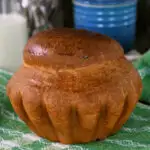
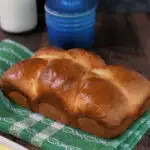
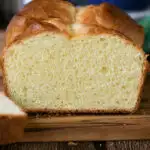
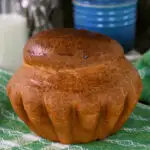





Where is the video. Excited to try this.
If you’re running an ad blocker the video won’t play. After the brioche video plays, other recipe videos will play. You can always refresh the page to see the brioche video again.